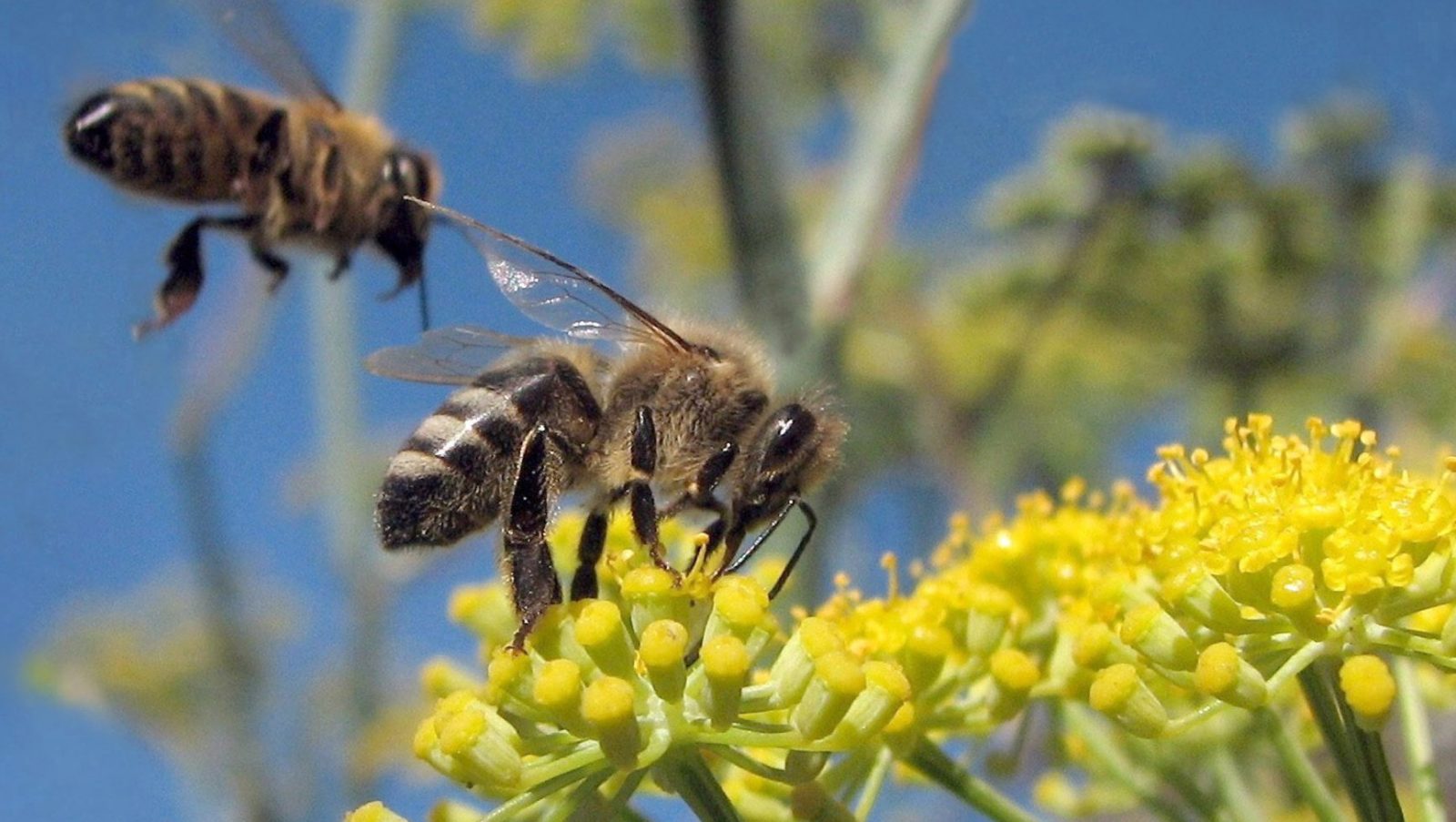The news about bees’ woes has been circulating for so long that you may have tuned it out. But we’ve also known about bee problems long enough that scientists are beginning to offer up solutions.
There seem to be several things teaming up on bees and other pollinators; one of them is a parasitic mite called the Varroa destructor. Varroa mites may have something to do with colony collapse, though that’s still a mystery. Journalist Charles C. Mann takes National Geographic readers on a tour of the ideas to make the Varroa mite less of a destructor in this article. The following five solutions are drawn from his piece.
Solution 1 — Miticide
This is the main way beekeepers deal with Varroa right now. It’s not ideal:
Most farmers facing insect issues turn to chemicals, such as the pesticides sprayed on apple trees to control maggots. Even though mites and bees are more closely related than apples and maggots, chemical firms have discovered a dozen or more effective miticides. The chemicals are widely used, but not a single bee researcher, commercial beekeeper, or bee hobbyist I spoke with was happy about putting toxins into hives. In addition, scientists report, many varroa are already resistant to commercial miticides.
Solution 2 — RNA interference (RNAi)
Beeologics, a subsidiary of Monsanto, is developing a medication that contains bits of genetic material that targets part of the Varroa mite genetic code. The system affects RNA, a DNA precursor, and should be ready in five to seven years.
In the Beeologics version, bees would be fed sugar water containing RNAi, which disables mite RNA. In theory the doctored sugar water should not affect the bee. But when mites drink the bees’ hemolymph, the mites will also take in RNAi — and it should affect them. It’s as if you could kill vampires by eating pizza with garlic sauce.
Solution 3 — Breed better bees
Mann starts his piece with the story of the great bee die-off of 1915, which was probably caused by a virus. In response, an English monk bred a super bee: gentle, hardworking, and tough. Now, scientists at the U.S. Department of Agriculture’s research center in Baton Rouge, La., are trying to breed mite-resistant bees, breeding strains that kill Varroa-infected larvae or pick off the mites:
By running their middle legs over their bodies, honeybees tidy themselves and each other. If bees groom before mites attach themselves, they can dislodge the pests. An obvious goal is a hygienic bee that grooms intensively. But breeders fear they will produce bees that primp constantly, like vain adolescents. And always there is the worry that breeding for one trait will compromise others — that hygienic bees, for instance, will be aggressive or make little honey.
Solution 4 — Genetically engineered bees
Traditional breeding is slow and painstaking, but until recently it was nearly impossible to genetically engineer bees. Now scientists have a workable technique. But:
It will take years of work before the method can be used to develop a better bee. And releasing genetically modified bees is bound to be controversial.
Solution 5 — Stop worrying about mites
Varroa mites, well, they suck. But bees can survive them, and given enough time, perhaps they would even evolve resistance to the parasites. We could take this opportunity to work on systemic solutions instead: reduce the pesticides that affect bees, increase the habitat for wild pollinators, and diversify farms so that there are always flowers available.
That’s a far cry from what we’ve got now:
Bees need to forage for food much of the year, but fields devoted to single crops typically have flowers for just a few weeks, while weeds that could tide bees over are killed by herbicides. So few bees now exist that farmers must rent hives from huge commercial outfits that transport them from crop to crop in 18-wheelers. The peak or nadir occurs every February and March, when about 1.6 million hives from all over converge on California’s Central Valley to pollinate almonds. In a few frenzied weeks, the hordes help produce about 80 percent of the world’s almond supply.
Mann’s piece is wonderfully written — I suggest reading it in full. The systemic solutions make the most sense for protecting various pollinating species, but so far they haven’t made economic sense to many farmers. The decline in bees has hit almond farmers, for instance, in the pocketbook; but it hasn’t hit them so hard that they are breaking up their groves or planting flowers beneath the orchards.
Eventually, economics or regulation may lead farmers to put bees before productivity. But in the meantime, they’ll be happy for any solution that works.



